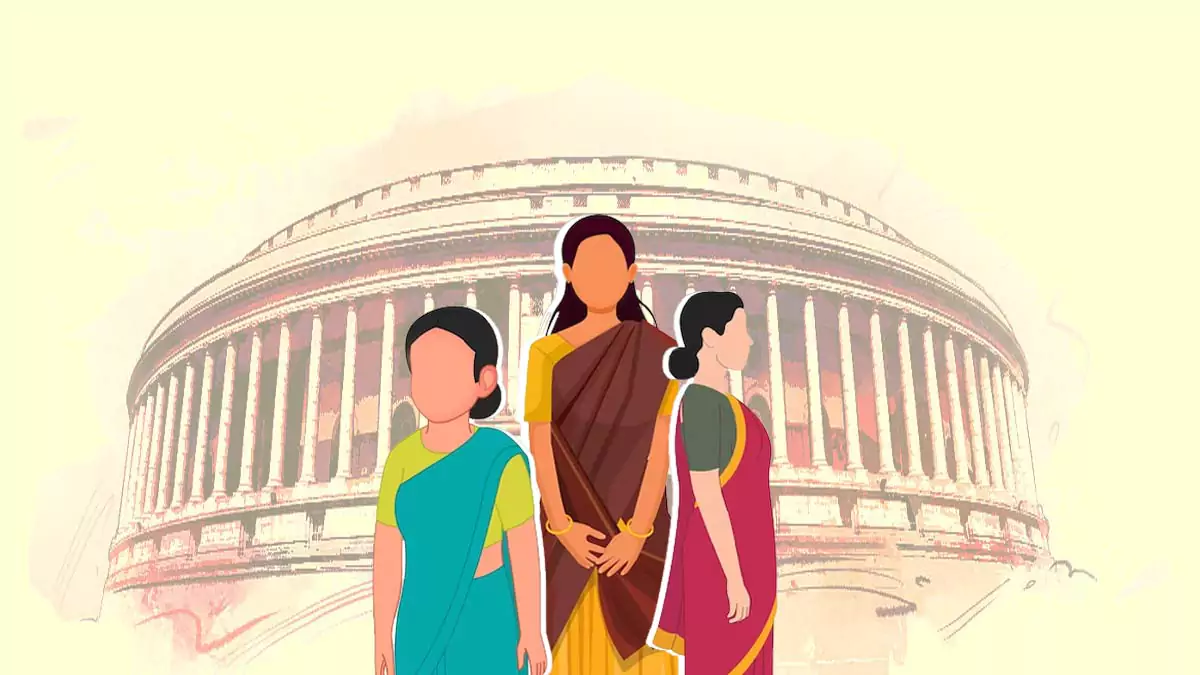Nari Shakti Vandan Adhiniyam (Act)
The Women’s Reservation Bill, officially known as the Nari Shakti Vandan Adhiniyam, 2023, was passed by the Indian Parliament in September 2023. It mandates 33% reservation for women in the Lok Sabha (Lower House of Parliament) and State Legislative Assemblies. However, its implementation is contingent on delimitation and a post-2026 census, pushing actual enforcement to 2029 or later.
This bill is considered a landmark step in India’s journey toward gender equality in political representation. However, it has also raised debates on delayed implementation, exclusion of Rajya Sabha, and lack of OBC reservation.
- Reservation Structure – Breaking Down the 33%
Quota
The core provision of the bill mandates that one-third (33%) of the total seats in the Lok Sabha and State Assemblies will be reserved for women.
Key Inclusions
- Applies to the Lok Sabha, State Legislative Assemblies, and the Delhi Assembly.
- Sub-reservation for Scheduled Castes (SC) and Scheduled Tribes (ST) women.
- Reservation will last for 15 years from its implementation date, but it may be extended by Parliament if required.
Key Exclusions (Controversial Aspects)
- No reservation for OBC women (a major demand from parties like SP, RJD, and BSP).
- No reservation for religious minorities (Muslim women are notably excluded).
- Does NOT apply to Rajya Sabha (Upper House of Parliament) or State Legislative Councils (Vidhan Parishads).
- Understanding the Seat Distribution
The 33% reservation for women is distributed as follows:
Reserved in Lok Sabha (Parliament’s Lower House)
- Out of 543 seats in the Lok Sabha, around 181 seats will be reserved for women once implemented.
- This includes seats already reserved for SC/ST candidates (which will have a sub-quota for women).
Reserved in State Legislative Assemblies
- Every state’s 33% seats will be reserved for women candidates.
- Within this quota, seats reserved for SC/ST categories will have a sub-reservation for women.
Union Territories with Legislatures
- Women’s reservation will also apply to Union Territories that have legislative assemblies, such as Delhi, Puducherry, and Jammu & Kashmir.
- Rotation of Reserved Seats – A Controversial Mechanism
One of the most debated aspects of the bill is the provision for rotation of reserved seats.
How Will Rotation Work?
- The seats reserved for women will change after every delimitation exercise (which depends on the next census).
- This means that a seat reserved for women in one election might not remain reserved in the next election.
Why Is This a Problem?
- Political Uncertainty:
- Male politicians may hesitate to invest in constituency development, fearing they might lose their seat due to reservation.
- Women politicians may struggle to establish long-term voter connections if their reserved seat changes every election.
- Electoral Instability:
- Frequent seat changes disrupt local political equations and make governance short-term-oriented.
- Comparison with Panchayati Raj Experience:
- A similar rotational reservation system was implemented in Panchayati Raj Institutions (PRIs).
- While it increased women’s participation, it also led to many women being fielded as temporary candidates controlled by male relatives.
Solution Suggested by Critics
- Instead of rotating reserved seats frequently, the reservation should last for at least two election cycles in a constituency.
- This will allow women to establish leadership and ensure consistent governance.
- Duration of Reservation—15 Years with Scope for
Extension
The bill states that the 33% reservation will remain in force for 15 years.
Why This Provision?
- Ensures a fixed time period for women’s increased participation in governance.
- Parliament has the power to extend the reservation beyond 15 years if needed.
Challenges & Criticism
What happens after 15 years?
- If Parliament does not extend the law, the reservation will lapse, potentially reversing progress.
- The bill does not provide a permanent solution for gender parity in politics.
Solution Proposed:
Convert the women’s reservation into a permanent feature rather than a time-bound policy. - Implementation Timeline – Delayed Until 2029 or Beyond
Why the Delay?
- The bill mandates that reservation will be implemented only after the first census post-2026 and subsequent delimitation.
- Since the next census was delayed due to COVID-19, the earliest possible execution is in the 2029 General Elections or later.
Why Is This a Major Issue?
- No Immediate Impact: The bill was passed in 2023, but its actual implementation might take 6–10 years.
- Census Delays = Reservation Delays: If the census is postponed beyond 2026,the reservation could be pushed to 2034 or later.
- Political Timing Concerns: Some critics argue that the government passed the bill as a symbolic move before the 2024 elections, without providing immediate reservation benefits.
What Could Be Done Instead?
Implement reservation immediately using the existing constituencies, without waiting for delimitation.













